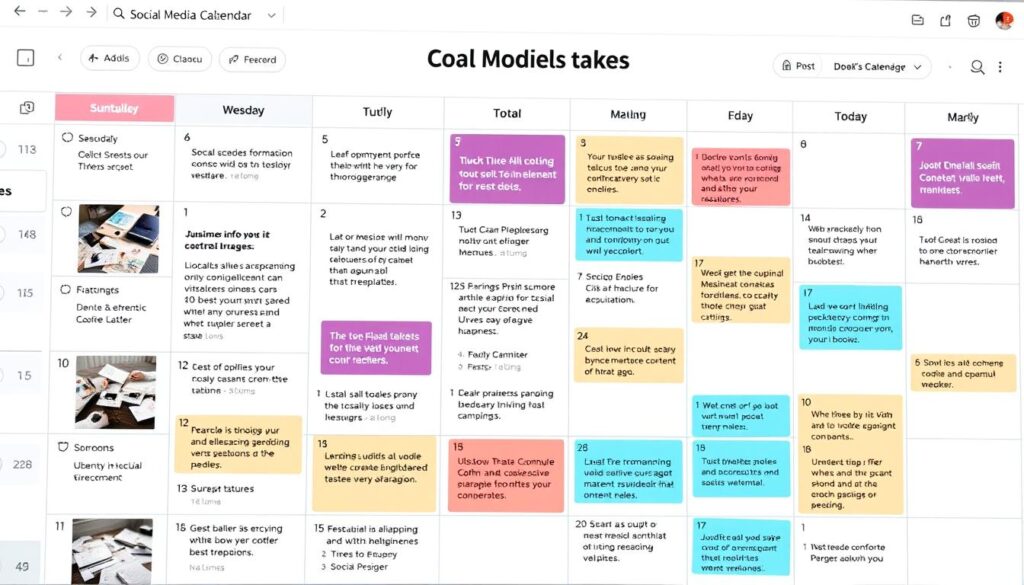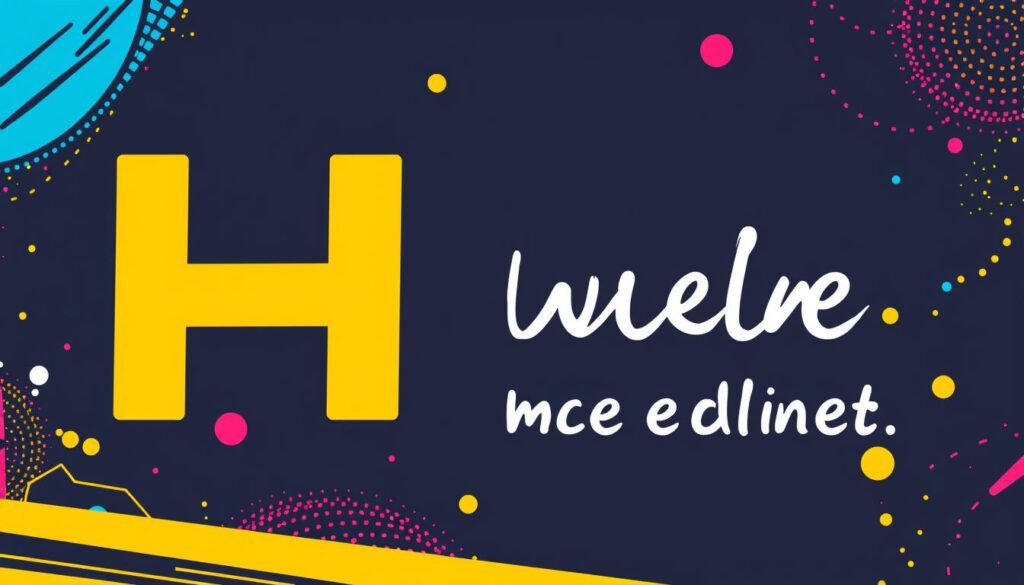In the ever-evolving digital landscape, crafting a compelling online presence is crucial for brand success. Creative content creation plays a pivotal role in cutting through the noise and fostering meaningful connections with the target audience.
The art of creating engaging social media content lies in striking a balance between creativity and strategy. As we navigate the complexities of the digital age, it becomes increasingly evident that effective content can significantly boost audience engagement.
Key Takeaways
- Crafting a compelling online presence through creative content.
- Understanding the balance between creativity and strategy in content creation.
- Boosting audience engagement through effective social media content.
- The importance of adapting to the evolving digital landscape.
- Fostering meaningful connections with the target audience.
Understanding Social Media Content Creation
In the ever-evolving landscape of digital marketing, understanding the nuances of social media content creation is crucial for brands aiming to captivate their audience. Great content grabs attention, tells a story, or answers questions, helping build meaningful connections between brands and their followers.
Effective content creation is not just about producing material that resonates with the audience; it’s about crafting a strategy that drives engagement and fosters brand loyalty. For instance, Spotify’s Wrapped campaign is a prime example of how personalizing user data into shareable, engaging content can resonate deeply with audiences.
Defining Social Media Content Creation in 2024
Social media content creation in 2024 is about producing high-quality, engaging content that is tailored to the specific needs and preferences of the target audience. It involves understanding the intricacies of various social media platforms and leveraging them to enhance brand visibility and engagement.
Why Effective Content Creation Matters for Brand Success
Effective content creation is the backbone of any successful social media strategy. It helps brands stand out in crowded feeds and algorithms, capturing attention in an increasingly competitive environment. By building brand awareness, fostering audience trust, and driving meaningful engagement, effective content creation translates to tangible business results, including improved conversion rates, customer loyalty, and brand advocacy.
By understanding the critical role of content creation, brands can develop a robust content strategy that aligns with their overall marketing goals, ultimately leading to sustained growth and success in the digital landscape.
Key Elements of Successful Social Media Content
Successful social media content is built on foundational elements that include creativity, consistency, and visual appeal. These elements work together to capture the audience’s attention and drive engagement across various social media platforms.
Creativity and Strategic Alignment
Creativity is the spark that sets engaging content apart, but it must be aligned with a strategic intent to truly resonate with the target audience. Strategic alignment ensures that the content not only captivates but also communicates the brand’s message effectively. As noted by a social media expert, “Creativity is crucial, but without a clear strategy, it’s like shooting arrows in the dark.” Thus, a balance between innovative content and strategic goals is paramount.
Consistency and Brand Voice
Consistency in posting schedule and maintaining a uniform brand voice are critical for building trust and recognition among the audience. Consistency doesn’t just refer to the frequency of posts but also to the tone, style, and quality of the content. A consistent brand voice helps in creating a cohesive narrative that reinforces the brand’s identity across different social media platforms.
Visual Appeal and Platform Optimisation

The visual appeal of content is a significant factor in capturing the audience’s attention. Incorporating high-quality, platform-optimized visuals can significantly enhance engagement. Different social media platforms have unique requirements for visual content, including optimal dimensions, formats, and stylistic approaches. For instance, Instagram favours high-quality, aesthetically pleasing images, while Twitter (X) may require more concise, attention-grabbing visuals.
Types of Social Media Content That Drive Engagement
With the ever-evolving social media landscape, it’s essential to stay abreast of the content types that resonate with audiences. Different types of content can significantly impact how the audience interacts with a brand’s social media presence.
Images and Graphics
Images and graphics are among the most engaging types of content on social media. They can convey complex messages succinctly and are highly shareable. Using high-quality, relevant images can enhance a brand’s visual identity and captivate the audience’s attention.
Video Content
Video content, including both short-form and long-form videos, has become increasingly popular on social media platforms. It offers a dynamic way to engage audiences and can be used to tell stories, demonstrate products, or provide educational content. To create compelling video content, brands can utilise various tools.

Infographics and Data Visualisation
Infographics and data visualisation are effective ways to present complex information in an easily digestible format. They can make data more engaging and shareable, thus increasing the brand’s credibility and authority on the subject matter.
User-Generated Content (UGC)
User-generated content is a powerful tool for building authenticity and community around a brand. It involves encouraging and featuring content created by the brand’s consumers. UGC campaigns, like Starbucks’ #WhatsYourName, can foster a sense of belonging and promote brand loyalty.
By leveraging UGC, brands can create a more personal and relatable connection with their audience. It’s essential to manage rights, permissions, and attribution when using customer content.
Interactive Content Formats to Boost Audience Participation
To boost audience participation, incorporating interactive content formats into your social media strategy is essential. Interactive content not only captivates the audience but also encourages them to engage actively with the brand, fostering a deeper connection.
Polls and Surveys
Polls and surveys are effective tools for real-time engagement, offering valuable insights into audience preferences and opinions. Most social media platforms provide poll options that can be used to drive interaction, crowdsource ideas, and gather feedback on trending topics. Using poll sliders and emoji stickers can make the experience more enjoyable and keep voters engaged. For instance, a well-crafted poll can spark interesting discussions and increase follower engagement.
Quizzes and Challenges
Quizzes and challenges are another engaging way to interact with the audience. They can be designed to be entertaining, educational, or a mix of both, making them highly shareable. By creating quizzes related to your brand or niche, you can increase engagement and attract new followers. Moreover, challenges can encourage user-generated content, further amplifying your brand’s reach.
Live Streams and Q&A Sessions
Live streams and Q&A sessions provide a unique opportunity for real-time interaction between brands and their audience. They can range from casual Q&As to structured presentations, offering flexibility in format. To execute successful live sessions, it’s crucial to plan, promote, and manage technical aspects effectively. Building regular live programming can also help in fostering audience loyalty.
By incorporating these interactive content formats, brands can significantly enhance their social media presence and encourage active audience participation. As seen in the table below, different interactive formats can be used across various social media platforms to achieve different engagement goals.
| Interactive Format | Primary Engagement Goal | Example Use Case |
|---|---|---|
| Polls and Surveys | Gather feedback and opinions | Conducting a poll to decide on a new product feature |
| Quizzes and Challenges | Encourage user-generated content and engagement | Launching a branded challenge on TikTok |
| Live Streams and Q&A Sessions | Foster real-time interaction and build loyalty | Hosting a weekly Q&A session on YouTube Live |
As Neil Patel, a renowned digital marketing expert, once said, “The key to successful content marketing is to create content that resonates with your audience.” Interactive content formats are a powerful way to achieve this resonance, making your social media content more engaging and effective.
The Social Media Content Creation Process
Effective social media content creation is a multi-step process that begins with thorough research and planning. This process is crucial for developing a content strategy that resonates with the target audience and drives engagement across various media platforms.
Researching Your Audience Persona
Understanding the target audience is the foundation of any successful social media content strategy. Researching your audience persona involves gathering data on demographics, preferences, and behaviours to create content that is relevant and engaging.
By analysing audience insights, businesses can tailor their posts to meet the needs and interests of their target audience, thereby increasing engagement and brand loyalty.
Finding Content Gaps and Opportunities
Identifying content gaps and opportunities is a critical step in the social media content creation process. This involves analysing existing content, assessing its performance, and determining areas where new or different content can add value.
By leveraging these insights, businesses can develop a media content strategy that fills gaps and capitalises on opportunities, thereby enhancing their overall social media presence.
Creating a Content Calendar
A content calendar is an essential tool for organising and scheduling posts in advance. It helps ensure consistency across social media platforms and aligns content with broader marketing initiatives and campaigns.
By using a content calendar, businesses can streamline their content creation process, reduce last-minute scrambles, and maintain a cohesive strategy across different media channels.

Platform-Specific Content Strategies
To maximise engagement, it’s crucial to tailor content strategies to specific social media platforms. Different platforms have unique features, user demographics, and content preferences, requiring distinct approaches to achieve optimal results.
The following sections will explore platform-specific content strategies for major social media platforms, including Instagram, TikTok, LinkedIn, Twitter, Facebook, and YouTube.
Instagram and TikTok Content Optimisation
For visually-driven platforms like Instagram and TikTok, high-quality visuals and short-form videos are essential. Utilise Instagram Stories, Reels, and TikTok’s Duet feature to boost engagement. Leverage hashtags and trending challenges to increase discoverability. For instance, using relevant hashtags on Instagram can lead to a significant increase in engagement.
- Use high-quality visuals and short-form videos
- Leverage Instagram Stories, Reels, and TikTok’s Duet feature
- Utilise hashtags and trending challenges
LinkedIn and Twitter (X) Professional Content
On professional platforms like LinkedIn and Twitter, focus on informative and industry-specific content. Utilise LinkedIn Pulse for long-form content and Twitter for real-time engagement. Share thought leadership articles, industry news, and insightful analysis to establish your brand’s authority. For example, publishing thought leadership articles on LinkedIn can enhance your brand’s credibility.
- Focus on informative and industry-specific content
- Utilise LinkedIn Pulse for long-form content
- Leverage Twitter for real-time engagement
Facebook and YouTube Strategy
For Facebook and YouTube, a mix of engaging videos and community-building content works well. On Facebook, use Groups to foster community engagement, while on YouTube, focus on high-quality, in-depth videos. Utilise Facebook Live for real-time engagement and YouTube’s analytics to refine your content strategy. For instance, using Facebook Live can significantly boost engagement.
- Mix engaging videos and community-building content
- Use Facebook Groups for community engagement
- Focus on high-quality, in-depth videos on YouTube

By understanding the unique strengths and user preferences of each platform, you can tailor your content to maximise engagement and achieve your social media goals.
Crafting Compelling Social Media Content
Effective social media content creation involves a strategic blend of creativity, visual appeal, and engaging narratives. To drive engagement, it’s essential to understand the intricacies of media platforms and tailor content accordingly.
Writing Engaging Captions and Copy
Captions and copy are crucial elements in social media content, as they provide context and drive audience interaction. To craft compelling captions, focus on clarity, conciseness, and relevance, ensuring they resonate with your target audience. For more insights on crafting compelling captions, visit our detailed guide on 10 key steps in crafting compelling social media.
Creating Scroll-Stopping Visuals
Visuals play a pivotal role in capturing audience attention on media platforms. To create scroll-stopping visuals, leverage principles such as colour psychology and composition techniques. Consistency in visual style is also vital for reinforcing your brand identity. Utilise tools like Canva or Adobe Spark to develop visually appealing content that stands out.

Social Media Content Creation Tools and Resources
The right tools can significantly enhance the efficiency and quality of social media content creation, making it a vital area of focus for marketers. With numerous options available, selecting the most appropriate tools is crucial for optimising content creation processes.
Design and Editing Software
Design and editing software plays a pivotal role in creating visually appealing content for social media platforms. Tools like Adobe Creative Cloud and Canva are popular choices among marketers for their versatility and user-friendly interfaces.

Content Management Platforms
Content management platforms help streamline the process of creating, scheduling, and publishing content across various social media channels. Hootsuite and Buffer are well-known platforms that offer comprehensive solutions for managing social media content.
AI-Powered Content Creation Tools
AI-powered tools are revolutionising the landscape of social media content creation by automating tasks such as caption generation, image creation, and video editing. According to recent data, 38% of marketers report that generative AI enhances social media marketing efficiency by streamlining content creation processes.

By leveraging these tools and resources, marketers can significantly improve their social media content creation capabilities, leading to more engaging and effective campaigns.
Measuring Content Performance and ROI
Measuring the performance of your social media content and its return on investment (ROI) is essential for data-driven decision-making.
Key Metrics to Track
To effectively measure content performance, it’s crucial to track the right metrics. Engagement rates, including likes, comments, and shares, provide insights into how your audience interacts with your content. Impressions help you understand the reach of your content, while conversions indicate the number of users who completed a desired action.
Other key metrics include click-through rates (CTR), which measure the percentage of users who clicked on your content, and follower growth rate, which indicates the increase or decrease in your follower count over time.
Using Analytics to Refine Your Strategy
Analytics tools are vital for gathering data on your social media content’s performance. By analysing these insights, you can refine your content strategy to better resonate with your audience. For instance, if your data shows that video content performs better than static images, you can adjust your content calendar accordingly.
Regularly reviewing your analytics allows you to identify patterns and trends, enabling you to make informed decisions about future content. This iterative process ensures your social media strategy remains effective and aligned with your audience’s preferences.
Building a Career in Social Media Content Creation
Building a career in social media content creation requires a blend of creativity, strategy, and technical skills. As social media continues to play a pivotal role in marketing strategies for various brands, the demand for skilled professionals in this field is on the rise.
Skills Needed for Professional Content Creators
To succeed as a content creator, one must possess a diverse skill set. Key skills include:
- Creativity in developing engaging content
- Understanding of social media platforms and their respective audiences
- Ability to analyze performance metrics and adjust strategies accordingly
- Proficiency in using various content creation tools and software
These skills are essential for creating effective content that resonates with target audiences and enhances brand visibility.
Career Paths and Opportunities
Career opportunities in social media content creation are diverse, ranging from in-house roles to freelance work and entrepreneurship. Professionals can specialize in areas such as:
- Video production and editing
- Graphic design and visual creation
- Copywriting and content strategy
- Influencer marketing and management
By focusing on a specific area, content creators can build a strong portfolio and attract opportunities from various brands and media companies.
Common Content Creation Challenges and Solutions
Effective social media content creation requires navigating through a multitude of challenges. As businesses strive to maintain a strong online presence, they must overcome obstacles such as creative blocks and the demand for high-volume content production.
Overcoming Creative Blocks
Creative blocks can hinder even the most experienced content creators. To overcome this, businesses can encourage a culture of innovation and provide their teams with the freedom to experiment with new ideas. For instance, dedicating a portion of the content budget to exploring new formats or collaborating with influencers can help stimulate creativity.
Managing Content Creation at Scale
Managing content creation at scale requires strategic planning and efficient management systems. Hiring an internal social media content creator can transform the way your social media team operates, as they will regularly create content for your social profiles and understand the uniqueness of your target audience. To maximise efficiency, businesses can adopt a hybrid approach, balancing in-house creation with external resources and user-generated content.
| Content Strategy | Description | Benefits |
|---|---|---|
| In-house Creation | Content created by internal team members | Brand consistency, deeper audience understanding |
| External Resources | Content sourced from external creators or agencies | Fresh perspectives, reduced workload |
| User-Generated Content | Content created by the audience | Increased engagement, authentic content |
For more insights on the challenges of content creation, visit this LinkedIn article to explore the hidden challenges and potential solutions.
Conclusion: Elevating Your Social Media Presence Through Creative Content
By synthesising the insights from this guide, you’ll be well-equipped to develop a social media content strategy that yields tangible results. Effective content creation is both an art and a science, requiring creativity, strategy, and continuous learning. To elevate your brand‘s social media presence, focus on understanding your audience and leveraging the right media channels. By doing so, you’ll drive meaningful engagement and achieve your marketing goals through compelling content and media optimisation.






